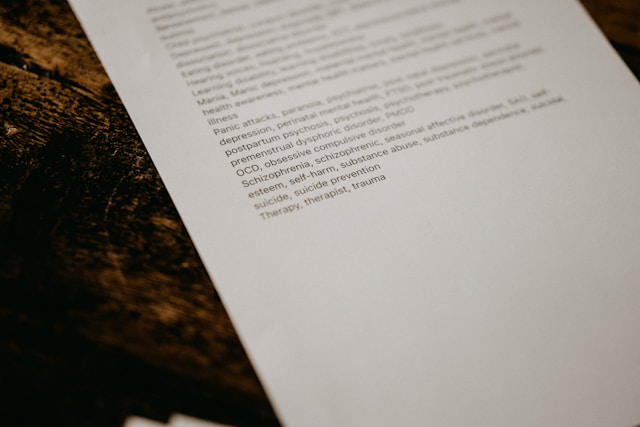Student Resume Guide: Creating an Effective CV Without Work Experience
Invalid Date
Landing your first job or internship can feel overwhelming—especially when you don’t have much (or any) formal work experience.

But here’s the good news: employers don’t expect students to have lengthy resumes. What they do look for is potential, motivation, and a clear ability to communicate your strengths. That’s why choosing the right resume format for students is essential.
In this article, we’ll show you how to write a compelling student resume—even if your work history is thin or nonexistent. You’ll learn how to structure your resume, what to include, and how to highlight your best qualities. And if you’d like a smarter, faster way to create a tailored resume that fits your target job, our AI-powered resume-optimizer tool can help.
Why Resume Format Matters for Students

As a student or recent graduate, your resume format is one of the most important decisions you’ll make. It determines how your skills and achievements are presented—and how easily hiring managers can find what they’re looking for.
What Makes a Good Student Resume Format?
- Emphasizes education and transferable skills
- Highlights extracurriculars, volunteer work, or class projects
- Keeps content clean, scannable, and easy to read
- Fits onto a single page
- Avoids fluff and jargon
The best resume format for students typically follows a functional or combination layout. These formats focus on skills and relevant experience rather than job titles and years worked.
Best Resume Format for Students with No Experience
1. Start with a Clean Header

At the top of your resume, clearly include:
- Full name
- Phone number
- Professional email address
- LinkedIn profile or online portfolio (optional, but recommended)
2. Write a Strong Resume Summary or Objective
Instead of a generic “Objective” statement, write a short summary (2–3 sentences) that highlights:
- Your field of study or career interests
- Relevant soft skills
- Your eagerness to contribute
Example:
Motivated psychology student with strong communication skills and a passion for helping others. Looking for an opportunity to apply my research and collaboration experience in a dynamic team setting.
3. Showcase Education First
Since education is your strongest asset as a student, lead with this section. Include:
- Degree name (e.g., B.A. in Marketing)
- University name
- Graduation date (or expected date)
- Relevant coursework, honors, GPA (if 3.5 or higher)
4. Highlight Skills and Competencies
Use bullet points to list your most relevant skills. Focus on a mix of:
- Technical skills (e.g., Excel, Canva, JavaScript)
- Soft skills (e.g., time management, teamwork, leadership)
- Language or communication skills
To make this section stronger, tie your skills to tools or achievements wherever possible.
What to Include When You Have No Job Experience
Even if you’ve never had a formal job, you still have valuable experience. Use the following sections to show what you’ve done and learned:
1. Class Projects
List academic projects that required research, presentations, group work, or technical skills.
Example:
Market Research Capstone Project – Conducted a semester-long analysis of Gen Z consumer behavior, surveying 200+ students and presenting findings to faculty.
2. Volunteer Experience
Volunteering shows initiative and responsibility. List the organization, your role, and what you accomplished.
3. Extracurricular Activities
Clubs, sports teams, student government—these all demonstrate leadership, commitment, and collaboration.
4. Certifications or Online Courses
If you’ve completed any professional development online (like Google’s Career Certificates or LinkedIn Learning), include those here.
Formatting Tips for Student Resumes
- Keep it to one page
- Use a professional font (e.g., Arial, Calibri, or Helvetica)
- Stick to 11–12 pt. font with clear section headings
- Use bullet points to organize information
- Save your resume as a PDF, unless the employer says otherwise
Real Example: No Experience, Still Hired

Samantha, a sophomore biology student, wanted a summer internship at a local healthcare nonprofit. She had no job experience—but she did have:
- A strong GPA (3.8)
- Volunteer work at a food bank
- A group project on public health outreach
By using a functional resume format and tailoring her resume to the internship description, she landed an interview—and got the offer.
These suggestions can help you build a good resume that gets attention. If you'd like something that can take the guesswork out of the process and deliver a resume perfectly tailored to the job you want, try out OptApply’s resume optimizer.
Mistakes to Avoid on a Student Resume
Avoid these common pitfalls:
- Listing every class you’ve taken
- Using first-person language (no “I” or “my”)
- Including irrelevant hobbies unless they demonstrate real skills
- Overloading with fancy design that distracts from content
- Using a one-size-fits-all resume instead of customizing for each job
OptApply uses these suggestions to tailor a resume to match the job you're looking for—so you can skip the formatting stress and focus on landing the interview.
Conclusion: Your First Resume Starts Here
Writing a student resume with no experience might seem hard, but it’s completely doable with the right structure and focus. Choose a functional or combination resume format for students, lead with education and skills, and highlight any relevant projects or activities.
Ready to build a resume that gets noticed? Use our AI-powered resume optimizer to instantly tailor your resume to the job you want—so you can stand out with confidence.